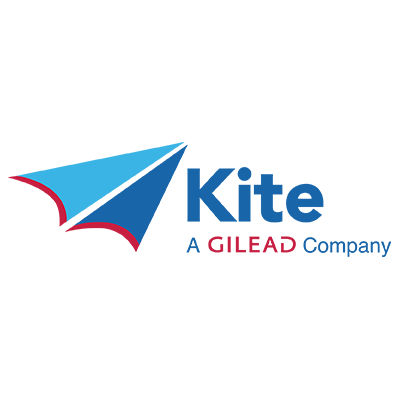预约演示
更新于:2025-05-07
TACI
更新于:2025-05-07
基本信息
别名 CD267、IGAD2、TACI + [6] |
简介 Receptor for TNFSF13/APRIL and TNFSF13B/TALL1/BAFF/BLYS that binds both ligands with similar high affinity. Mediates calcineurin-dependent activation of NF-AT, as well as activation of NF-kappa-B and AP-1. Involved in the stimulation of B- and T-cell function and the regulation of humoral immunity. |
关联
21
项与 TACI 相关的药物作用机制 BAFF-R抑制剂 [+2] |
在研适应症 |
非在研适应症- |
最高研发阶段临床1期 |
首次获批国家/地区- |
首次获批日期1800-01-20 |
作用机制 IL-23调节剂 [+1] |
在研机构 |
原研机构 |
在研适应症 |
非在研适应症- |
最高研发阶段临床前 |
首次获批国家/地区- |
首次获批日期1800-01-20 |
作用机制 BCMA调节剂 [+1] |
在研适应症 |
非在研适应症- |
最高研发阶段临床前 |
首次获批国家/地区- |
首次获批日期1800-01-20 |
5
项与 TACI 相关的临床试验NCT06916767
Phase 1 Study of BAFF CAR-T Cells (LMY-920) for Treatment of Relapsed or Refractory Non-Hodgkin Lymphoma. Substudy B: CLL Patients
CAR-T cell treatment of refractory lymphoma has shown success, particularly with CD-19 targeted CAR-T cells, however, many participants are refractory or relapse after response. Responses are more limited in CLL/SLL, possibly secondary to the suppressive effect of circulating B cells on T cell function.
BAFF receptor is a target that has been explored in CLL. Preclinical data indicates that CAR- T cells expressing B-cell activating factor (BAFF) can be another effective strategy to treat refractory CLL. This study aims to explore the efficacy of LMY-920 a BAFF-ligand CAR T cells with depletion of B cells with Obinutuzumab prior to apheresis.
BAFF receptor is a target that has been explored in CLL. Preclinical data indicates that CAR- T cells expressing B-cell activating factor (BAFF) can be another effective strategy to treat refractory CLL. This study aims to explore the efficacy of LMY-920 a BAFF-ligand CAR T cells with depletion of B cells with Obinutuzumab prior to apheresis.
开始日期2025-05-01 |
申办/合作机构 |
NCT06340750
A Phase I Study of BAFF CAR-T Cells (LMY-920) for Treatment of Systemic Lupus Erythematosus
This phase 1 study seeks to examine the safety and recommended phase 2 dose (RP2D) of BAFF-ligand CAR-T cells (LMY-920) in adult patients with refractory systemic lupus erythematosus (SLE). It is hypothesized that BAFF CAR-T cells will be safe and will improve SLE disease activity scores.
开始日期2025-01-15 |
申办/合作机构 |
NCT05546723
LUMT1A22, Phase 1 Study of BAFF CAR T Cells (LMY-920) for Treatment of Relapsed or Refractory Myeloma (LMY-920-002)
Since CAR-T cell treatment of refractory myeloma has shown success, based on preclinical data, we posit that CAR-T cells expressing B-cell activating factor (BAFF) can become another strategy to treat refractory myeloma, even after relapse following BCMA targeting CAR-T cell treatment. This will be phase 1 study of BAFF ligand CAR-T cells in relapsed and refractory myeloma.
开始日期2024-03-13 |
申办/合作机构 |
100 项与 TACI 相关的临床结果
登录后查看更多信息
100 项与 TACI 相关的转化医学
登录后查看更多信息
0 项与 TACI 相关的专利(医药)
登录后查看更多信息
658
项与 TACI 相关的文献(医药)2025-05-01·Poultry Science
16S rRNA and transcriptome analysis revealed the regulatory mechanism of Romboutsia lituseburensis on serum immunoglobulin levels in geese
Article
作者: Ouyang, Qingyuan ; Lin, Yueyue ; Hu, Shenqiang ; He, Zhiyu ; Li, Liang ; Liu, Tanze ; He, Hua ; Wang, Shangmin ; Wang, Jiwen ; Zhang, Xi ; Liu, Hehe ; Guo, Mengge
2025-04-01·International Journal of Immunogenetics
Association of TNFRSF13B Gene Polymorphisms With SARS‐CoV‐2 Infection, Severity, and Humoral Immune Response in a Moroccan Population
Article
作者: Bouddahab, Oumaima ; Lkhider, Mustapha ; Ezzikouri, Sayeh ; Noureddine, Rachid ; Altawalah, Haya ; Aqillouch, Safaa ; Ouladlahsen, Ahd ; Pineau, Pascal ; Laazaazia, Oumaima
2025-03-01·European Journal of Immunology
Monogenic Common Variable Immunodeficiency (Mo‐CVID) Score for Optimizing the Genetic Diagnosis in Pediatric CVID Cohort
Article
作者: Cortimiglia, Martina ; Calistri, Elisa ; Azzari, Chiara ; Barbati, Federica ; Palterer, Boaz ; Quaranta, Francesca ; Ricci, Silvia ; Maggi, Laura ; Boscia, Silvia ; Lodi, Lorenzo ; Annunziato, Francesco ; Mazzoni, Alessio
75
项与 TACI 相关的新闻(医药)2025-04-29
·抗体圈
这篇文章于2022年发表在ImmuneNetw.,主要总结了自身免疫性疾病靶向免疫治疗最新进展。摘要: 在过去的几十年里,靶向炎性细胞因子、免疫细胞和细胞内激酶的生物药物和小分子抑制剂已成为治疗自身免疫性疾病的标准护理。抑制TNF、IL-6、IL-17和IL-23彻底改变了类风湿性关节炎、强直性脊柱炎和银屑病等自身免疫性疾病的治疗。使用抗CD20mAb的B细胞耗竭疗法在神经炎症性疾病患者中显示出有希望的结果,抑制B细胞存活因子被批准用于治疗系统性红斑狼疮。靶向Ag呈递细胞和T细胞上表达的共刺激分子也有望通过调节T细胞功能在自身免疫性疾病中具有治疗潜力。 最近,靶向JAK家族(负责多个受体信号转导)的小分子激酶抑制剂在自身免疫和血液疾病领域引起了极大的兴趣。然而,在治疗效果和安全性方面仍存在未满足的医疗需求。新兴疗法旨在使用先进的分子工程技术在不影响免疫功能的情况下诱导免疫耐受。【NO.1】背景介绍 自身免疫性疾病是以自身抗原炎症失调为特征的病理性疾病,影响3%-10%的普通人群。自身免疫性疾病的常规治疗方法抑制了一般免疫功能以调节不受控制的炎症。然而,这些治疗方法在异质性患者群体中并未完全成功,其疗效以牺牲副作用为代价,特别是感染风险增加,通常来自非选择性免疫抑制。为了克服传统疗法的局限性,目前的治疗方法旨在更选择性地抑制炎症信号,同时最大限度地减少对稳态免疫功能的破坏。 最近在了解疾病发病机制和新药制造技术方面取得的进展导致靶向免疫疗法广泛用于治疗自身免疫性疾病。此外,先进的分子工程技术催生了靶向可溶性介质或细胞表面标志物的重组蛋白治疗药物,如mAb和receptor-Ab融合蛋白。自1990年代首次批准靶向TNF的选择性蛋白质疗法用于类风湿性关节炎(RA)以来,靶向免疫疗法已成为治疗自身免疫性疾病的游戏规则改变者。根据全球药品市场报告,阿达木单抗多年来一直是全球最畅销的药物,其次是其他靶向免疫疗法,如pembrolizumab、ibrutinib和ustekinumab。 随着对疾病发病机制的了解迅速增加,许多靶向炎症信号通路的生物药物正在开发中,以治疗顽固性炎症性疾病。在成功引入生物疗法治疗自身免疫性疾病后,分子靶点已扩展到细胞内激酶。小分子激酶抑制剂阻断收敛信号在治疗效果和长期安全性方面具有重要意义。 本文总结了目前针对自身免疫性疾病发病机制中涉及的信号通路的治疗方法,并介绍了旨在诱导免疫耐受的新兴免疫疗法。由于靶向免疫疗法市场正在迅速增长,因此我们专注于已获得临床批准用于治疗自身免疫性疾病的药物。【NO.2】自身免疫性疾病中的炎症 炎症是生物体修复组织损伤并防止外来物质侵害的自然过程。然而,针对自身抗原的免疫反应失调会导致免疫耐受丧失和自身免疫性疾病的发展。自身免疫源于耐受性检查点的中枢和外周缺陷以及不耐受免疫细胞的激活。自身抗原可通过从免疫特权位点释放自身抗原、产生新自身抗原以及自身蛋白与外来物质的分子模拟来诱导。 自身免疫的临床表现多种多样,从存在自身抗体的无症状疾病到导致危及生命的器官损伤的暴发性自身免疫性疾病。自身免疫性疾病的发展可由遗传易感个体的环境因素触发。环境触发因素,包括压力、吸烟和感染,会诱导先天免疫的促炎功能,并促进适应性免疫的病理反应。 尽管自身免疫的传统概念是适应性免疫系统的失调,但越来越多的证据表明,先天免疫系统对自身免疫性疾病的发生和发展也至关重要。作为先天免疫的关键参与者,巨噬细胞和树突状细胞(DC)对于抗原呈递和促炎细胞因子(如TNF、IL-1β、IL-6、IL-23、B细胞激活因子(BAFF,也称为Blys或TNFSF13B)和增殖诱导配体(APRIL,也称为TNFSF13A)的产生至关重要。1型IFN与系统性红斑狼疮(SLE)及其相关疾病的发病机制密切相关,主要由浆细胞样DC(pDC)产生,浆细胞样DC是DC的一个特殊亚群。巨噬细胞/DC和T细胞/B细胞之间的相互作用进一步促进了自身免疫性炎症。 初始CD4+Th细胞根据细胞因子环境分化为不同的T细胞亚群。T细胞通过自身抗原识别、细胞因子产生和增强的细胞毒性,在自身免疫性疾病的发病机制中发挥关键作用。近几十年来,产生IL-17和FOXP3+Tregs的Th17细胞已被强调为自身免疫性疾病的治疗靶点。 自身反应性B细胞是适应性免疫的另一个主要组分,它产生病理性自身抗体,并通过Ag呈递和细胞因子产生激活T细胞。自身抗体的产生是各种自身免疫性疾病(包括RA和SLE)的标志。RA中的抗瓜氨酸肽抗体和SLE中的抗dsDNA抗体是导致临床表现和疾病活动度的代表性致病性自身抗体。由于B细胞在自身免疫中的重要作用,B细胞表面分子是各种自身免疫性疾病的治疗靶点。 来自活化免疫细胞的可溶性介质通过与它们的同源受体结合来转导炎症信号。一旦被炎性细胞因子结合,受体就会激活JAK家族,以诱导STAT的磷酸化、二聚化和核转位。STAT的基因转录促进细胞增殖和分化以及多种炎症介质的产生,进一步加剧自身免疫性炎症。 尽管每种自身免疫性疾病的病理生理机制不同,但几种常见的炎症途径可能是免疫治疗的治疗靶点。基于我们目前对自身免疫性炎症发病机制的理解,治疗自身免疫性疾病的关键治疗靶点如图1所示。表1、2、3列出了已批准用于自身免疫性疾病或正在临床开发的靶向免疫疗法,具体如下。本文重点介绍靶向免疫治疗在免疫介导的炎症性疾病领域的临床应用。图1.自身免疫性疾病发病机制中的关键治疗靶点表1.用于治疗自身免疫性疾病的细胞因子靶向疗法靶细胞因子结构药物临床应用正在调查中(IIb或III期)TNF-ɑsTNFR2-IgG1Fc依那西普RA、pJIA、AS、银屑病、PsA抗TNF单克隆抗体英夫利昔单抗RA、AS、银屑病、PsA、UC、CD超说明书使用:BD、结节病阿达木单抗RA、pJIA、AS、银屑病、PsA、UC、CD、化脓性毛突炎、葡萄膜炎超说明书使用:BD戈利木单抗RA、AS、PsA、UC赛妥珠单抗RA、AS、银屑病、PsA、CDIL-1IL-1R拮抗剂阿那白滞素RA、大写字母川崎病(NCT04656184)超说明书使用:AOSD、sJIA、痛风、复发性心包炎等IL-1R1-IgGFc利洛西普CAPS、DIRA、复发性心包炎超说明书使用:AOSD、痛风等IL-1β抗体抗卡纳单抗AOSD、sJIA、CAPS、TRAPS、HIDS/MKD、FMFCOVID19相关CRS(12)超说明书使用:痛风和许多其他IL-6(英语)IL-6单克隆抗体抗体西鲁尤单抗RA(13,14)*奥洛珠单抗RA(15)(NCT02760407,NCT02760433,NCT03120949)克拉扎奇珠单抗RA(NCT02015520)PsA(16)COVID19相关CRS(NCT04343989)西妥昔单抗CAR-T相关CRS(NCT04975555)IL-6R抗体抗体托珠单抗RA、sJIA、pJIA、SSc相关ILD、巨细胞动脉炎、CRSPMR(NCT02908217)超说明书使用:AOSD、Takayasu动脉炎NMOSD(17)COVID19肺炎(18,19)(NCT04409262)沙利尤单抗RA类COVID19相关CRS(20)(NCT04315298)沃巴利珠单抗RA(NCT02518620)IL-17(英语)IL-17单克隆抗体抗体依奇珠单抗银屑病、PsA、轴向SpA苏金单抗AS、银屑病、PsA系统性红斑狼疮(NCT04181762)轴向SpA(21)(NCT04156620,NCT04732117)Hiradenitissupprativa(NCT03713619,NCT03713632,NCT04179175)巨细胞动脉炎(NCT04930094)Grave眼病(NCT03713619)IL-17R抗体溴达利尤单抗牛皮癣轴向SpA(22)PsA(23)不锈钢(NCT03957681)IL17A/F抗体比莫珠单抗AS(NCT03928743)轴向SpA(NCT03928704,NCT04436640)银屑病(24,25)(NCT03598790,NCT03766685)PsA(NCT03895203、NCT03896581、NCT04009499NCT04109976)Hiradenitissuppruativa(NCT04242446,NCT04242498,NCT04901195)IL-23抗p40mAb抗体乌司奴单抗银屑病、PsA、UC、CD特发性炎性肌炎(NCT03981744)高安动脉炎(NCT04882072)抗p19mAb抗体古塞利尤单抗银屑病,PsAUC(NCT04033445)CD(NCT03466411,NCT04397263)瑞沙珠单抗牛皮癣PsA(26,27)UC(NCT03398135,NCT03398148)CD(NCT03104413、NCT03105102、NCT03105128NCT04524611)替尔拉奇珠单抗牛皮癣PsA(NCT03552276、NCT04314544、NCT04314531NCT04991116)米利珠单抗银屑病(NCT03482011、NCT03535194NCT03556202)UC(NCT03518086、NCT03519945NCT03524092)CD(NCT03926130,NCT04232553)1型IFN抗IFNR1单克隆抗体Anifrolumab系统性红斑狼疮备注:该表包括具有一种或多种已批准自身免疫性疾病适应症的药物。该适应症仅涵盖自身免疫性疾病领域。pJIA,多关节幼年特发性关节炎;UC,溃疡性结肠炎;CD,克罗恩病;BD,白塞病;sJIA,系统性幼年特发性关节炎;DIRA,IL-1受体拮抗剂缺乏;TRAPS,TNF受体相关周期性综合征;HIDS/MKD、高免疫球蛋白D综合征/甲羟戊酸激酶缺乏症;FMF,家族性地中海热;CRS,细胞因子释放综合征;CAR-T,嵌合Ag受体-T细胞;SSc相关ILD、系统性硬化症相关间质性肺病、PMR、风湿性多肌痛、NMOSD、视神经脊髓炎谱系疾病;中轴型SpA,中轴型脊柱关节炎。*尽管III期临床试验取得了积极结果,但由于安全性问题,FDA并未推荐将sirukumab用于治疗RA。表2.用于治疗自身免疫性疾病的细胞靶向疗法靶细胞结构药物临床应用正在调查中(IIb或III期)B细胞抗CD20mAb抗体利妥昔单抗RA类寻常型天疱疮(28)GPA、MPA超说明书使用:MS、免疫性血小板减少症奥瑞珠单抗女士奥法木单抗女士乌布利妥昔单抗MS(NCT03277261、NCT03277248NCT04130997)抗CD19mAb抗体因比利珠单抗NMOSDIgG4RD(NCT04540497)重症肌无力(NCT04524273)抗BAFF单克隆抗体贝利尤单抗系统性红斑狼疮抗BAFF-R单克隆抗体伊那单抗系统性红斑狼疮(NCT05126277)pSS(29)T细胞CTLA4-IgG1Fc阿巴西普RA,pJIApSS(NCT02067910,NCT02915159)PsA(30)特发性炎性肌炎(NCT02971683)GPA(NCT02108860)CD40mAb抗体伊斯卡利单抗pSS(NCT03905525)备注:该表包括已批准用于自身免疫性疾病或基于II期试验的积极结果正在临床开发的药物。GPA,肉芽肿性多血管炎;MPA,显微镜下多血管炎;NMOSD,视神经脊髓炎谱系疾病;IgG4RD,免疫球蛋白G4相关疾病;pJIA,多关节幼年特发性关节炎。表3.用于治疗自身免疫性疾病的激酶靶向疗法靶标激酶结构药物临床应用正在调查中(IIb或III期)杰克JAK1/3抑制剂托法替布RA类贾(31)(NCT01500551,NCT03000439)PsAAS(32))UC(英语)JAK1/2抑制剂巴瑞替尼RA类系统性红斑狼疮(NCT03843125,NCT03616912,NCT03616964)JIA(NCT03773965,NCT03773978)sJIA(NCT04088396)特应性皮炎(33,34)葡萄膜炎(NCT04088409)JAK1选择性抑制剂乌帕替尼RA类CD(NCT03345823、NCT03345836NCT03345849)PsA加州大学(35)(NCT03006068,NCT03653026)轴向SpA(NCT04169373)特应性皮炎(36,37)(NCT03661138,NCT04195698)高安动脉炎(NCT04161898)巨细胞动脉炎(NCT03725202)非戈替尼RA(由EMA和日本提供)统一(38)(NCT02914535)CD(NCT02914561,NCT02914600)TYKTYK2选择性抑制剂Deucravacitinib银屑病(NCT03624127,NCT03611751)PsA(NCT04908189,NCT04908202)BTK公司BTK抑制剂Evobrutinib(依布替尼)MS(NCT04338022,NCT04338061)托布替尼MS(NCT04410978、NCT04410991、NCT04411641NCT04458051)重症肌无力(NCT05132569)非布替尼MS(NCT04544449、NCT04586010NCT04586023)利扎布替尼寻常型天疱疮(NCT03762265)免疫性血小板减少症(NCT04562766)备注:该表包括已批准用于自身免疫性疾病或基于II期试验的积极结果正在临床开发的药物。UC,溃疡性结肠炎;sJIA,系统性幼年特发性关节炎;CD,克罗恩病;中轴型SpA,中轴型脊柱关节炎。【NO.3】细胞因子靶向治疗肿瘤坏死因子(TNF) TNF是一种主要由髓系细胞和活化T细胞产生的促炎细胞因子。RA滑膜中TNF表达的增加和TNF转基因小鼠中关节炎的发展表明TNF在慢性炎症中的致病作用。抗TNF治疗的成功彻底改变了RA患者的治疗策略。自1998年英夫利昔单抗和依那西普首次获批以来,已有4种单克隆抗体(英夫利昔单抗、阿达木单抗、戈利木单抗和赛妥珠单抗)和1种受体-Fc融合蛋白(依那西普)获批,目前可用于治疗慢性免疫介导的疾病,包括RA、幼年特发性关节炎(JIA)、强直性脊柱炎(AS)、银屑病和银屑病关节炎(PsA)。这种mAb也适用于治疗炎症性肠病和非感染性葡萄膜炎。 尽管TNF具有促炎作用,但它是一种多效性细胞因子,依赖于TNF受体(TNFR)的结合。TNFR1在几乎所有有核细胞上组成性表达,主要负责TNF的炎症功能,而TNFR2仅在特定细胞类型上表达,例如髓源性抑制细胞、Treg细胞和单核细胞,与TNF的调节功能相关。源自TNFR1和TNFR2的不同信号转导通路已在其他地方进行了综述。目前可用的抗TNF疗法同时抑制TNFR1和TNFR2。由于TNF的调节方面,TNF阻断可能反常地诱导Th1/Th17细胞扩增和IFN反应失调,这可以解释抗TNF治疗期间治疗失败、自身抗体生成和反常银屑病的原因。因此,正在研究抑制TNFR1和增强TNFR2的更多选择性治疗。IL-1 IL-1α和IL-1β是IL-1家族的成员,是促炎细胞因子,与先天免疫反应密切相关。尽管IL-1α和IL-1β通过与IL-1受体1(IL-1R1)结合而具有共享生物学功能,但IL-1α与IL-1β的几个特征是不同的。在间充质细胞中组成型表达的pro-IL-1α具有生物活性,而巨噬细胞产生的pro-IL-1β需要被caspase-1切割才能成为活性IL-1β。pro-IL-1β的Caspase-1依赖性裂解是通过激活包含核苷酸结合结构域成员和包含亮氨酸富集重复序列的[NLR]蛋白家族(例如NLR家族含pyrin结构域的[NLRP]1、NLRP3、NLR家族CARD结构域4)或包含PYRIN-HIN-200结构域的蛋白家族成员(例如,在黑色素瘤2中不存在)的炎性小体激活来介导的)。此外,与IL-1β相反,IL-1α在体循环中未检测到,这表明IL-1α在自身免疫性疾病中的致病作用是局部的,而不是全身的。目前,IL-1β被认为比IL-1α与多种风湿性疾病更密切相关,包括全身性JIA、成人发病斯蒂尔病(AOSD)和痛风,以及与遗传性自身炎症性疾病的相关性,例如冷热蛋白相关周期性综合征(CAPS)和家族性地中海热。 被IL-1α或IL-1β占据后,IL-1R1与IL-1R3形成异源三聚体复合体,以募集髓样分化初级反应基因88(MYD88),从而触发随后的激酶级联反应(IL-1R相关激酶[IRAK]、IκB激酶、IκB和NF-κB),从而促进促炎状态。IL-1的这种炎症活性受来自同一IL-1家族的天然IL-1R拮抗剂(IL-1Ra)的调节。IL-1Ra占据IL-1R1导致构象变化,阻碍异源三聚体复合物与IL-1R3的形成,从而阻碍IL-1介导的炎症过程。 目前,已有3种蛋白质疗法被批准用于抗IL-1疗法:canakinumab,一种抗IL-1βmAb;anakinra,一种重组IL-1受体拮抗剂;和rilonacept,一种IL-1R1-Fc融合蛋白。根据它们的分子结构,所有3种药物都阻断IL-1β,阿那白滞素和利洛西普也抑制IL-1α。作为一种抑制IL-1信号转导的新治疗方法,口服NLRP3抑制剂,包括达潘舒腈(OLT177),正在研究中。 在早期临床开发中,阿那白滞素被测试为RA的治疗方法。尽管阿那白滞素在RA患者中的治疗效果已得到证实,但由于其成本效益低,因此不推荐将阿那白滞素作为一线生物疗法。抗IL-1疗法更广泛地用于自身炎症性疾病,如全身性JIA、AOSD和CAPS。其他具有高炎症负荷的疾病,例如痛风和复发性心包炎,也可通过IL-1靶向治疗进行控制。由于IL-1在炎症性疾病中的广泛作用,IL-1阻断有望在治疗顽固性自身免疫性疾病(包括SLE和系统性硬化症)以及控制过度的促炎反应(如细胞因子释放综合征和巨噬细胞激活综合征)方面提供临床益处。IL-6 IL-6是一种多效性细胞因子,由各种细胞类型在感染、炎症和恶性肿瘤的情况下产生。IL-6最初被鉴定为T细胞分泌的“B细胞分化因子”或“B细胞刺激因子”。尽管抗IL-6疗法在B细胞成熟中起着关键作用,但其对多发性骨髓瘤患者的治疗效果不佳。然而,托珠单抗(第一种抗IL-6R阻断单克隆抗体)的IL-6靶向治疗被证明在RA中具有显着的临床益处,甚至在疗效上优于阿达木单抗。托珠单抗目前被批准用于治疗RA、JIA、AOSD、巨细胞动脉炎和细胞因子释放综合征,因为它能够调节全身性过度炎症。最近,已研究抗IL-6疗法在SLE、视神经脊髓炎和系统性硬化症中的治疗应用。 IL-6在生理和病理条件下具有多种生物学功能。在生理状态下,IL-6负责巨噬细胞分化为M2状态,通过成骨细胞上RANK配体表达的增加进行破骨细胞生成,以及通过肝脏中的JAK-STAT通路进行急性期反应。在病理(炎症)条件下,IL-6通过调节FOXP3、RORC和IL-23R表达,关键参与Th17分化。IL-6对滤泡辅助性T细胞的发育和B细胞的成熟也很重要。 IL-6信号转导通过IL-6R和糖蛋白130(gp130)的复合物转导。gp130二聚化依次激活多个信号转导通路,包括JAK-STAT、MAPK、PI3K和YES相关蛋白1,这些蛋白转位到胞核并控制与细胞生长、增殖和炎症相关的基因转录。为了干扰IL-6信号通路,抗IL6疗法可以靶向IL-6、IL-6R、gp130、JAK和STAT3。然而,对副作用的担忧限制了gp130和STAT3作为治疗靶点的潜力。因此,抗IL6mAb、抗IL-6RmAb和JAK抑制剂已被用于阻断IL-6信号转导,并且使用可溶性gp130抑制IL-6/IL-6R复合体的可能性正在研究中。IL-17 IL-17A,通常称为IL-17,是CD4+T细胞Th17亚群的标志性细胞因子,但它也由CD8+T细胞(Tc17)、γδT细胞、自然杀伤T细胞、第3组先天性淋巴细胞和中性粒细胞产生。在生理状态下,Th17细胞通过募集中性粒细胞、宿主对细菌和真菌的防御以及皮肤和粘膜部位的组织修复来促进先天免疫。在病理条件下,IL-17A与TNF和其他炎性趋化因子协同作用,促进自身免疫。炎症性关节炎和神经炎症的动物模型表明,Th17细胞而不是Th1细胞在这些疾病的发展中起主要作用。 Th17细胞在IL-1β、IL-6和TGF-β存在下,通过抑制FOXP3并激活STAT3和RORC来源于初始CD4+初始T细胞。随后,IL-23稳定致病性Th17细胞的增殖和存活。与IL-17A结合后,IL-17R亚基A(IL-17RA)和亚基C(IL-17RC)的称为SEF/IL-17R的独特胞质结构域募集接头蛋白Act1,从而触发TNF受体相关因子(TRAF)6的泛素化,随后激活NF-κB、MAPK和激活蛋白1(AP1)通路和C/EBP转录因子。 来自动物和人类研究的越来越多的证据表明,IL-23/IL-17轴是多种自身免疫性疾病(如AS、PsA和RA)的极好治疗靶标。目前的抗IL-17疗法包括IL-17A(苏金单抗和依奇珠单抗)和IL-17RA(brodalumab)的mAb。正如预期的那样,抗IL-17疗法在银屑病、PsA和AS中产生了显著的反应。出乎意料的是,这种方法在RA(一种Th17依赖性疾病)患者中未能显示出显着的临床疗效。这种不令人满意的结果可以通过疾病本身的异质性或IL-17A的不同致病作用来解释,具体取决于RA分期(例如早期与晚期)。IL-23 IL-23是一种由DC和活化的巨噬细胞分泌的促炎细胞因子。作为IL-12家族的一员,IL-23是一种异二聚体,由IL-12共有的p40亚基(IL-12/IL-23p40)和IL-23特有的p19亚基(IL-23p19)组成。尽管IL-12和IL-23共享一个结构亚基,但IL-23更重要、更广泛地参与自身免疫性疾病的发病机制。最重要的是,IL-23通过维持Th17特征基因、抑制抑制因子、上调IL-23R表达和诱导效应基因来稳定Th17细胞的致病特征。它还作为自分泌因子促进DC和巨噬细胞的促炎功能。 IL-23与由IL-12Rβ1(与IL-12/IL-23p40结合)和IL-23R(与IL-23p19结合)组成的受体复合体相互作用,它们分别与酪氨酸激酶(TYK)2和JAK2结合。TYK2和JAK2的激活导致STAT的磷酸化和核转位,主要是STAT3。通过靶向抑制IL-12/IL-23p40或IL-23p19,可以阻断IL-23信号传导。作为一种抗IL-12/IL-23p40mAb,乌司奴单抗可阻断IL-12和IL-23,而抗IL-23p19mAb(guselkumab、tildrakizumab、risankizumab和mirikizumab)仅抑制IL-23。 与抗IL-17治疗类似,IL-23抑制可有效治疗银屑病和PsA。然而,与抗IL17治疗相比,靶向p40和p19亚基的mAb均未能改善AS的临床病程。尽管IL-23在AS的临床前模型中具有明显的致病作用,但这种意外结果表明,IL-23在人类自身免疫性疾病的组织和时间依赖性环境中发挥着不同的作用。在克罗恩病中,乌司奴单抗成功改善了临床结局,抗IL-23p19mAb的临床试验正在进行中(表1)。1型IFN 1型IFN,包括IFN-α、IFN-β、IFN-ε、IFN-κ和IFN-ω,最初被鉴定为可溶性抗病毒因子。随后的研究表明,IFN-α在自身免疫性疾病,尤其是SLE的发病机制中起着至关重要的作用。SLE患者的临床数据显示1型IFN特征的表达显著增加。重组IFN-α治疗后SLE样综合征的发展也表明1型IFN在自身免疫性疾病中的病理作用。 虽然大多数有核细胞可以产生1型IFN,但主要的细胞来源是pDC。含核酸的细胞外刺激,例如分别与抗RNA和DNA自身抗体复合的RNA和DNA,与pDC中的Toll样受体7(TLR7)和TLR9相互作用,以募集MYD88并激活IRAK和TRAF,从而导致IFN调节家族(IRF)7易位并导致IFN-α转录)。1型IFN与由IFNAR1和IFNAR2组成的IFN-α/β受体(IFNAR)结合。与1型IFN结合后,IFNAR1和IFNAR2分别激活JAK1和TYK2,从而导致STAT1和STAT2磷酸化和核转位。在胞核中,STAT1/STAT2与IRF9一起诱导IFN刺激基因的表达。在SLE中,IFN-α通过刺激髓系DC、Th1细胞和B细胞以及抑制Treg来促进促炎反应。 IFN-α在SLE中的病理生理学意义导致了1型IFN靶向免疫治疗的发展。在SLE中测试了Rontalizumab和sifalimumab中和干扰素α的单克隆抗体,但未能控制疾病活动。尽管IFN-α以外的IFN的作用尚不清楚,但仅抑制IFN-α而保持IFN-β和IFN-κ活性可能解释了SLE治疗效果不足的原因。最近,anifrolumab是一种靶向IFNAR1以阻断所有1型IFN生物学功能的人单克隆抗体,已被批准用于中度至重度SLE。Anifrolumab在减少疾病活动、口服皮质类固醇使用和年化发作方面显示出一致的临床益处。然而,狼疮性肾炎和神经精神性狼疮患者被排除在临床试验之外。 几种阻断1型IFN的新治疗方法正在研究中。为了减少1型IFN的产生,药物靶向pDC和信号转导分子,如TLR、MyD88和IRAK4。激酶抑制剂也正在临床开发中,用于治疗各种自身免疫性疾病,具体取决于它们抑制IFNAR下游信号通路的能力。【NO.4】细胞靶向治疗B细胞 随着我们对B细胞功能的理解不断扩大,B细胞被认为是自身免疫性疾病的积极参与者。有趣的是,B细胞耗竭疗法在RA和多发性硬化症(MS)中的成功突出了B细胞在自身免疫中的病理意义。除了在Ab产生中发挥作用外,B细胞还通过Ag呈递、三级淋巴组织的形成和细胞因子(如IL-6、TNF、IFN-γ和GM-CSF)的产生积极参与自身免疫。B细胞的Ab非依赖性功能解释了RA和MS中B细胞耗竭疗法的治疗效果,尽管没有自身抗体减少。 B细胞在骨髓中产生,并在外周组织中依次分化为Ag特异性B细胞。B细胞分化通过体细胞超突变和免疫球蛋白的类别转换重组,伴随着B细胞表面标志物的变化,继续增加对Ag的亲和力。CD20仅在从前B细胞到记忆B细胞的B细胞谱系中表达,但不在浆细胞中表达(图1)。在过去的几十年里,抗CD20疗法一直是B细胞耗竭的主要工具。利妥昔单抗是一种嵌合抗CD20mAb,可将CD20再分布到脂筏中,然后激活补体依赖性细胞毒性和Ab依赖性细胞毒性(ADCC)。利妥昔单抗有效消除CD20+B细胞会耗尽分泌Ab的浆母细胞的细胞来源,并阻止不依赖Ab的B细胞功能,从而减轻自身免疫性炎症。随着利妥昔单抗在RA和MS中的临床成功,已经开发了具有不同结合表位、不同给药途径和先进治疗效果的多种抗CD20疗法。Ocrelizumab和ofatumumab是人源化抗CD20mAb,已被批准用于复发性MS,其他抗CD20mAbobinutuzumab和ublituximab的临床试验正在进行中(表2)。 但是,利妥昔单抗在治疗SLE方面并未完全成功,SLE是刻板的B细胞介导的疾病之一。除了SLE患者的异质性外,利妥昔单抗治疗失败还可能由于存在自身反应性CD20−(但CD19+)长寿命浆细胞、外周血和组织中B细胞不完全耗竭或B细胞重建过程中的疾病发作。为了广泛抑制对抗CD20治疗耐药的B细胞,B细胞耗竭疗法靶向CD19,CD19在CD20+B细胞以及CD20-浆母细胞和一些浆细胞上表达。人源化抗CD19mAbinebilizumab被批准用于治疗视神经脊髓炎谱系疾病,并且正在进行临床试验以治疗其他炎症性神经系统疾病(表2)。 抑制B细胞的另一种方法是阻断B细胞存活因子,特别是BAFF和APRIL。BAFF与其3种不同受体连接后,与B细胞成熟和存活密切相关:1)BAFF受体(BAFF-R,称为TNFRSF13C),在除浆细胞外的大多数B细胞亚群上表达;2)跨膜激活剂、钙调节剂和亲环蛋白配体相互作用剂(TACI;称为TNFRSF13B),在边缘区B细胞、记忆B细胞和浆细胞上表达;3)B细胞成熟Ag(BCMA;称为TNFRSF17)在浆母细胞和浆细胞上表达。与BAFF-R不同,TACI和BCMA也与APRIL结合,这对Ab类别转换和浆细胞存活很重要。 鉴于B细胞成熟、增殖和存活的重要作用,BAFF/APRIL系统被认为是SLE及其相关自身免疫性疾病中一个有前途的治疗靶点。贝利尤单抗是一种人源化抗BAFFmAb,是FDA批准用于SLE的第一个靶向免疫疗法。然而,贝利尤单抗并不总是对所有SLE患者具有普遍的治疗益处。Ianalumab是一种抗BAFF-R的单克隆抗体,在原发性干燥综合征(pSS)患者的II期试验中显示出有希望的结果。作为B细胞耗竭疗法,ianalumab有2种作用模式:通过增强ADCC裂解B细胞和阻断BAFF信号传导。Telitacicept是一种TACI-Ig融合蛋白,基于其对BAFF/APRIL系统的抑制作用,也正在临床开发中。T细胞 作为适应性免疫的关键调节因子,T细胞在自身免疫的发生和发展中起着关键作用。T细胞效应器功能需要TCR的Ag识别和共刺激受体的额外参与。因此,已经研究了这些共刺激分子的调节用于自身免疫性疾病和恶性肿瘤的T细胞靶向治疗。 CD28信号转导是通过激活MAPK、AKT和NF-κB通路进行T细胞激活和分化的一种众所周知的共刺激通路。CD4+T细胞上表达的CD28与Ag呈递细胞上的CD80或CD86结合,CTLA-4作为CD28的抑制性对应物共享。基于CD28和CTLA-4的反调节,开发了一种由CTLA4胞外结构域和IgGFc区(CTLA4-Ig)组成的融合蛋白,通过占据CD80和CD86来抑制CD28信号传导。第一个CTLA4-Ig阿巴西普被批准用于治疗RA和JIA,已证实对控制炎症性关节炎有效。随后,另一种与CD80和CD86结合改善的CTLA4-Igs(包括belatacept和MEDI5256)已被研究用于临床应用。尽管贝拉西普于2011年被批准用于肾移植受者,但贝拉西普在基于钙调磷酸酶抑制剂的常规方案之外的额外临床益处存在争议。 CD40通路是T细胞效应器功能的主要激活信号。CD40L与CD40连接后,CD80和CD86表达上调。当活化T细胞上的CD40L与靶细胞上的CD40结合时,多个激酶级联反应会激活转录因子,如NF-κB和AP1,以诱导细胞存活、增殖和分化。CD40信号转导对于参与T细胞依赖性Ab反应、生发中心形成和记忆B细胞分化的B细胞-T细胞相互作用尤为重要。由于其在B细胞功能中的关键作用,靶向CD40信号转导的治疗潜力已在临床前和临床研究中得到研究。iscalimab(一种人源化抗CD40mAb)最近的II期试验显示pSS患者的临床改善,随后的III期试验正在进行中(表2)。 靶向其他共刺激信号转导的免疫疗法,如诱导型T细胞共刺激因子(ICOS)和OX40通路,也正在开发中,以抑制自身免疫性疾病中的T细胞效应功能。作为在活化的CD4+T细胞上表达的共刺激分子,ICOS和OX40参与T细胞的存活、分化和活化。【NO.5】激酶靶向治疗 如前所述,将可溶性炎症介质与其同源受体结合通过激活细胞内激酶(通常是JAK家族)来转导信号。JAK家族由JAK1、JAK2、JAK3和TYK2组成,与细胞因子受体(包括IL-2R、IL-4R、IL-5R、IL-6R、IL-13R和1型IFN)、生长激素和促红细胞生成素有关。JAK家族的激活导致STAT的磷酸化、二聚化和核转化。在细胞核中,STAT有助于参与细胞分化、增殖和存活、细胞因子产生和血管生成的基因转录。 由于JAK在造血中的关键作用,JAK抑制剂首次被评估用于治疗血液病,尤其是骨髓增生性肿瘤。自ruxolitinib(一种JAK1和JAK2抑制剂)于2011年首次被批准用于治疗骨髓纤维化以来,许多激酶抑制剂已被批准或研究用于治疗血液系统恶性肿瘤和炎症性疾病。几种JAK抑制剂已根据其经证实的临床疗效被批准用于RA、PsA和溃疡性结肠炎。每种JAK抑制剂对JAK的选择性不同,但尚未证明JAK抑制剂之间的治疗效果存在差异。Tofacitinib和baricitinib分别主要靶向JAK1/3和JAK1/2。Upadacitinib和filgotinib是第二代JAK抑制剂,可选择性抑制JAK1。 与上述调节细胞外间隙细胞激活信号的免疫疗法相比,JAK抑制剂靶向细胞内间隙的信号通路。JAK靶向治疗会抑制来自多个细胞因子受体的收敛信号,并破坏反馈回路。因此,即使部分阻断选定的激酶也可以有效地下调多种炎症信号通路,减轻自身免疫性炎症。应该注意的是,在一项头对头的随机对照试验中,巴瑞替尼显示出比抗TNFmAb阿达木单抗更好的临床反应。 除JAK抑制剂外,选择性TYK2抑制剂deucravacitinib正在等待临床批准,作为银屑病的首个口服靶向治疗。TYK2介导源自IL-12、IL-23和1型IFN的细胞内炎症信号。根据对PsA、炎症性肠病和SLE患者的机制见解,目前正在研究deucravacitinib在PsA、炎症性肠病和SLE患者中的治疗潜力(表3)。 布鲁顿酪氨酸激酶(BTK)抑制剂也有望通过调节B细胞功能来改善自身免疫性炎症。目前正在研究BTK抑制剂在各种自身免疫性疾病中的应用,包括RA、MS、pSS和SLE。最近一些使用BTK抑制剂的II期试验在复发性MS患者中显示出有希望的结果。 激酶抑制的未来方向是基于先进的分子技术开发更具选择性的抑制剂,具有最小的脱靶效应和更高的器官特异性。此外,应广泛研究由不受调节的细胞行为引起的除改善炎症以外的靶向效应。最近的证据表明,接受托法替布治疗的患者面临心脏事件、恶性肿瘤、血栓形成和死亡的风险增加,FDA已决定修改JAK抑制剂的黑框警告。自身免疫性疾病的慢性病程引发了对长期药物使用的安全性担忧,这会严重影响患者和医生的药物选择。【NO.6】新兴免疫疗法 随着对自身免疫性疾病免疫发病机制的更好理解和生物技术的不断进步,许多具有新治疗靶点和先进疗效的药物不断被开发出来,显示出有希望的疗效。尽管如此,仍然存在未满足的医疗需求,例如异质性治疗效果和免疫抑制引起的不良事件。为了克服当前治疗的局限性,炎症性疾病的治疗方法已经多样化和个体化。在这里,我们简要介绍了由先进分子工程技术实现的靶向免疫治疗的新视角。嵌合抗原受体(CAR)T细胞疗法 CART细胞疗法的基本概念是施用含有基因工程TCR的自体T细胞,以捕获肿瘤特异性Ag并通过增加细胞毒性来消除肿瘤细胞。在弥漫性大B细胞淋巴瘤患者治疗成功后,CD19CART细胞疗法被批准用于治疗B细胞淋巴瘤和急性淋巴细胞白血病。 CAR是由胞外Ag识别结构域、跨膜结构域和胞内T细胞激活结构域组成的工程化受体。细胞外结构域,也称为单链Fv,被设计为单克隆抗体的可变重链和轻链。细胞外结构域对Ag的识别会激活细胞内结构域上基于免疫受体酪氨酸的激活基序,导致细胞因子的产生和靶细胞的裂解。为了提高治疗效果,细胞内结构域由一个激活结构域CD3ζ和一个共刺激结构域(如CD28)组成。 尽管CART细胞最初被引入肿瘤学领域,但它们消除病理细胞的治疗潜力延伸到自身免疫性炎症性疾病的治疗。最近,Mougiakakos等人报道了自体CD19CART细胞疗法在常规治疗难治性SLE患者中的快速临床缓解。在该患者中,单次给药后7周内可在外周血中检测到输注的CD19CART细胞,抗dsDNA抗体快速且持续下降。这是一个有希望的结果,因为目前抗CD20mAb的B细胞耗竭需要定期注射并注意免疫原性以维持初始治疗效果。 随着工程T细胞疗法的发展,嵌合自身抗原受体(CAAR)T细胞和CARTreg疗法作为自身免疫性疾病的新型治疗策略而受到关注。CAART细胞的胞外结构域表达一种自身抗原,该抗原可与Ag特异性自身反应性B细胞和T细胞相互作用。CAART细胞疗法可能对具有已知自身抗原的自身免疫性疾病有效。CARTreg细胞的设计也期望产生Ag特异性免疫调节反应,而输注多克隆Treg细胞无法充分实现这种反应。然而,这种针对自身免疫性疾病的工程化T细胞疗法尚未得到广泛研究。此外,尽管工程化T细胞疗法具有假设的治疗效果,但细胞因子释放综合征和神经毒性可能会限制对细胞疗法在自身免疫性疾病中使用的热情,尤其是在高炎症微环境中。低剂量IL-2疗法 IL-2是Treg细胞分化、激活和存活的关键细胞因子,主要由活化的CD4+T细胞产生。Treg定义为CD4+FOXP3+CD25+CD127低表达,通过分泌抗炎细胞因子(IL-10、肿瘤生长因子-β和IL-35)、DC诱导免疫抑制酶(吲哚胺2,3-双加氧酶)、效应T细胞和NK细胞失活以及对CD8+T细胞和NK细胞的直接细胞毒性。Treg细胞缺陷和/或功能障碍常见于RA、SLE、pSS和AS等各种自身免疫性疾病。 除了激活Treg细胞外,IL-2还诱导效应T细胞的存活和增殖,并抑制Th17细胞分化。基于其对常规T细胞的刺激作用,大剂量IL-2疗法首次被批准用于转移性肾细胞癌和转移性黑色素瘤。然而,后来的研究表明,IL-2的主要作用是通过在Treg细胞上表达的高亲和力IL-2R介导的。IL-2R以单体、二聚体和三聚体变体表达,三聚体IL-2R的亲和力高于单体和二聚体形式。由于Treg细胞在高水平上组成性表达三聚体IL-2R,因此Treg细胞对IL-2比效应记忆CD4+T细胞高度敏感。因此,已在自身免疫性疾病中评估了低剂量IL-2疗法(0.3至300万国际单位/天),预计它将通过Treg刺激诱导免疫耐受,同时对效应T细胞的影响最小。 在自身免疫性疾病(包括SLE、PsA和丙型肝炎病毒诱导的冷球蛋白血症血管炎)患者中,低剂量IL-2疗法改善了临床结果,这与Treg细胞的增加一致。在临床试验中,低剂量IL-2具有可耐受的安全性,并且与感染风险增加无关。此外,在小鼠中,低剂量IL-2长期治疗不会损害对疫苗接种、感染和癌症的免疫反应。 良好的临床试验结果导致开发了氨基酸序列改变的工程化IL-2蛋白(IL-2突变蛋白),以提高选择性并减少不良反应。IL-2与生物疗法(如TNF和IL-6抑制)的组合也正在研究中。免疫耐受诱导 在不破坏免疫系统其他部分的情况下诱导对自身抗原的免疫耐受是治疗自身免疫性疾病的理想方法。在这方面,可以诱导Ag特异性免疫耐受的口服耐受性已经研究了一个多世纪。肠道相关淋巴组织(GALT)是最大的免疫器官,可维持对大量食物和共生微生物的耐受性。鉴于GALT在肠道稳态和全身调节中的作用,饲喂Ags对系统性自身免疫性疾病的耐受性影响已在临床前和临床试验中得到广泛研究。在动物模型中,发现口服耐受诱导可有效预防甚至治疗各种炎症性疾病,包括炎症性关节炎、实验性自身免疫性脑炎、糖尿病和葡萄膜炎。根据Ag的剂量,低剂量的Ag会促进分泌IL-4、IL-10和TGF-β的Treg细胞的产生,而高剂量的Ag会促进特定T细胞的克隆缺失或无反应。然而,这种免疫耐受机制并不排斥,可以重叠。 口服耐受诱导的早期试点试验和II期试验也显示出对RA、MS和葡萄膜炎患者有希望的结果,而没有治疗相关的毒性。然而,在RA和MS患者中进行Ag喂养的III期试验显示治疗效果不佳。尽管Ag喂养具有实验效果和可接受的安全性,但仍需要解决未解决的问题才能成功诱导免疫耐受:(1)Ag喂养方案(Ag的剂量和类型、粘膜佐剂的使用和给药频率);(2)与常规免疫抑制药物联合治疗;(3)反映口服耐受性发展有效性的生物和免疫标志物;4)选择适合诱导口服耐受的患者(年龄、疾病发作和脱敏史)。 抗原特异性耐受性的另一种方法是递送自身抗原的耐耐受性疫苗。致耐受性疫苗已成功诱导Ag特异性Treg细胞,并在自身免疫性疾病的动物模型中促进自身反应性T细胞无反应和细胞凋亡。已经研究了几种耐受性原疫苗平台,包括基于蛋白质/肽、纳米颗粒、细胞和DNA/RNA的疫苗,以增强MS临床前和临床研究中的免疫原性。尽管使用肽疫苗的III期试验未能显示出临床益处,但仍在使用MS患者的多种疫苗平台对耐受性方法进行研究。 最近,Krienke等人报道了在髓鞘少突胶质细胞糖蛋白(MOG35-55)诱导的实验性自身免疫性脑脊髓炎小鼠模型中,使用基于非炎性mRNA的疫苗成功诱导免疫耐受。尽管双链RNA分子在细胞外环境中具有固有的促炎性,但用1-甲基假尿苷(m1Ψ)取代尿苷会降低其促炎性质。MOG35-55编码m1Ψ修饰的单链mRNA疫苗可预防小鼠疾病的发展和进展。致耐受性疫苗诱导MOG35-55特异性FOXP3+Treg细胞并抑制MOG33-35特异性Th1和Th17细胞。PD1和CTLA4等抑制分子在Ag特异性细胞上的表达上调,疫苗的保护作用被PD1和CTLA-4靶向检查点抑制剂消除。 尽管如此,耐受性疫苗的开发具有挑战性,因为哪些自身抗原对自身免疫性疾病具有特异性尚无定论且存在争议,并且多种自身抗原可能涉及大多数自身免疫性疾病。【NO.7】结论 过去几十年来靶向免疫治疗的进步彻底改变了自身免疫性疾病患者的治疗和临床结果。目前的靶向免疫疗法通过阻断炎性细胞因子、细胞表面分子和细胞内激酶来抑制主要的促炎信号通路。尽管靶向治疗在自身免疫性疾病中取得了巨大成功,但在药物疗效和长期安全性方面仍未满足医疗需求。除了阻断炎症信号通路外,未来的疗法还旨在诱导长期的免疫耐受,同时保持保护性免疫功能。希望生物技术的进步和疾病知识将为开发具有更高治疗效果和最小不良反应的新药提供机会。此外,考虑到炎症介质和免疫细胞的多方面作用,需要开发更具选择性和特异性的药物,同时更精确地了解疾病发病机制。识别微信二维码,添加抗体圈小编,符合条件者即可加入抗体圈微信群!请注明:姓名+研究方向!本公众号所有转载文章系出于传递更多信息之目的,且明确注明来源和作者,不希望被转载的媒体或个人可与我们联系(cbplib@163.com),我们将立即进行删除处理。所有文章仅代表作者观点,不代表本站立场。
免疫疗法
2025-01-15
·求实药社
2024年最大创新药领域M&A产品Povetacicept亚洲权益之争,终于尘埃落定。
(图源&制表:瞪羚社)
2025年1月10日,再鼎医药和Vertex(下称“福泰制药”)达成独家合作和许可协议,再鼎医药获得福泰制药BAFF/APRIL双重拮抗剂Povetacicept(下称“Pove”)在大中华区(中国内地、香港、澳门和台湾地区)和新加坡开发和商业化权益,福泰制药将获得一笔预付款,后续有望获得药物注册的里程碑付款和销售分成。
这一次的引进,很难不让人想起来当年再鼎医药从Argenx手中引进FcRn拮抗剂艾加莫德,自首个IgA肾病创新药上市以来,国内肾科治疗药物市场正在快速地觉醒,Pove有望在未来快速增长的IgA肾病药物市场分到一块巨大的蛋糕。
拿下福泰制药Pove的大中华区权益,对再鼎医药在国内丰富自免重磅产品布局和加速自免领域商业化放量,意义重大。
01
爆品温床:肾科疾病大量未满足需求
肾科疾病对人类健康的威胁正在急剧提升。
以肾科最大细分病种为例慢性肾脏病(CKD)为例,大型流行病学调查显示全球CKD患者数量高达6.975亿(占全球人口9.1%),在中国CKD患者人数已超过1.2亿,占人口比重达到10.8%,患病率还在逐年递增。其中有研究表明:国内CKD主要病因是原发性肾小球肾炎,可占到CKD患者比重的58%。而IgA肾病正是全球最常见的原发性肾小球疾病之一。
IgA肾病公认致病机制尚未明确,目前主流较认可的理论是四重打击学说:起始黏膜感染引起异常的免疫系统激活产生了大量的自身抗体,自身抗体与抗原反应形成免疫复合物(如多聚体IgA),免疫复合物随着血液循环流经肾脏在其中沉积,从而激活肾脏局部的免疫系统(如补体系统),造成肾脏炎症反应及损害。
IgA肾病不仅非良性疾病,而且还是导致终末期肾脏病(ESRD)包括尿毒症的重要原因(必须进行透析或肾移植)。据一份IgA肾病患者预后报告显示:虽正接受治疗,仍有超1/3患者发病20年后进展至ESRD,近50%的患者在30年内发展为ESRD,高达20%-40%的患者诊出后10-20年内发生肾功能衰竭。目前全球尚未有治愈IgA肾病新药获批,这就意味着IgA肾病患者需要长期用药来延缓疾病进程。
尽管中国近2年刚开始有IgA肾病新药获批,但中国大概率是IgA肾病治疗药物潜力最大的市场之一,中国作为全球原发性肾小球疾病发病率最高的国家,IgA肾病预估高达500万人,而美国患者数仅约13万-15万人。
IgA肾病市场的潜力从刚开始商业化的新药放量速度就可见一斑,国内云顶新耀的耐赋康在2024年上半年便实现1.673亿元(首个半年销售),另一款IgA肾病药物Filspari则在2024年前三季度销售不断超出市场预期(Q3单季度销售爬至3560万美元)。另一方面,2023-2024年全球IgA肾病资产重磅M&A交易频出,5笔交易累计金额超过114亿美元,其中福泰制药并购Alpine的49亿美元就超过了总交易金额的40%。
(图源&制表:瞪羚社)
从IgA肾病治疗指南出发,IgA肾病常用治疗以支持治疗(RASi抑制剂、SGLT2i抑制剂等)、免疫抑制剂治疗(糖皮质激素等)为主,但这些都不是对因治疗(消除原发致病因子)。在既往STOP-IgAN研究显示,使用支持治疗联合免疫抑制治疗也仅能实现20%的完全临床缓解;既往TESTING研究结果显示,接受糖皮质激素的IgA肾病患者,虽然蛋白尿指标有所降低,但肾衰风险依然继续增加。
另外传统方式如全身性糖皮质激素治疗安全性风险显著,可能发生严重感染、心血管及代谢异常、骨质疏松及骨坏死等副作用。
(图源:建投医药)
从上不难看出,IgA肾病患者的未满足临床需求缺口巨大,大量患者都在等待疗效、安全性更好的创新对因治疗药物。
长期以来,IgA肾病在临床上一直缺乏有效的干预手段。2024年,同样布局IgA肾病的云顶新耀,凭借耐赋康的快速推进,全年市值上涨超过130%,这也让行业看到了IgA肾病这一领域当前的竞争尚处于蓝海阶段。如果再鼎能将Pove打造成第二个“艾加莫德”,无疑会进一步打开市值成长的空间。
02
潜在同类最佳的IgA肾病对因治疗药物
再鼎医药/福泰制药的BAFF/APRIL双重拮抗剂Pove可能是全球IgA肾病研发药物的潜在“最优解”。
前面提到的“四重打击假说”,第一重是“黏膜感染引起免疫系统中原始B细胞的类型转化,诱导浆细胞产生大量糖基化异常的IgA1分子”,那么源头可能即为B细胞的异常激活。其中,B细胞激活因子(BAFF/BLyS),可特异性的刺激B淋巴细胞增殖、分化和分泌抗体,对B细胞的存活和发育起到重要的调控作用;以及增殖诱导配体(APRIL),与B细胞激活因子密切相关,共同参与调控B细胞增殖、迁移和成熟。
Pove是一款突变TACI-Fc融合蛋白,可以对BAFF和APRIL产生高效双重拮抗作用,这意味Pove可以精准地拮抗BAFF和APRIL的配体,有效阻止致病性IgA的产生,真正实现从源头上控制疾病的进展。
众所周知,靶向生物制剂要实现疗效的最大化,对靶点的亲和力是核心指标之一。BAFF-R、TACI、BCMA(弱结合)分别是BAFF的三个受体,而APRIL也可以TACI、BCMA(强结合)和部分细胞表面的蛋白多糖结合,Pove则是选择了对可溶性TACI受体进行改造,公司认为TACI的胞外CRD2区域是结合BAFF和APRIL的关键区域,因此仅保留了CRD2区域,并且融合蛋白的形式大大提升了对BAFF和APRIL的亲和力。
Pove别出心裁的设计,得到了临床前、临床早期数据的大量正向反馈。
从已经公布的Pove药力分布数据可以看出,其在肾脏、淋巴结和皮肤中的分布是泰它西普的19倍、7倍和3.4倍,这意味着Pove可能在IgA肾病、系统性红斑狼疮等疾病中拥有比泰它西普更好的疗效。另外,改造后的Pove对APRIL的亲和力甚至高于APRIL单抗Zigakibart。
Pove在2024年4月最新公布的1b/2a期数据显示,41例IgA肾病患者每4周皮下注射80或240mg的Pove与具有临床意义的蛋白尿改善有关,48周时8名患者尿蛋白肌酐比(UPCR)较基线降低66%,与此同时63%患者(5名患者)达到缓解(UPCR<0.5g/g),肾功能稳定(≤eGFR较基线降低25%)且所有患者均在36周或更长时间(n=4)时实现了血尿的消退。
80mg、240mg两种剂量的Povetacicept治疗都与关键生物标志物致病性IgA(Gd-IgA1)的显著减少有关,其中80mg剂量在40周时减少了68.9%,240mg剂量在20周时减少了78.6%,以及药物的安全耐受性良好。
我们可以从真实世界评估CKD患者主要指标UPCR下降幅度对比Pove的同赛道竞品,在非头对头数据比较中,Pove用了最短的治疗时间实现了最大幅度UPCR下降,妥妥同类最佳的胚子。
当然,对比时下风靡的创新改良型激素疗法(布地奈德肠溶胶囊),Pove呈现出几个强大的迭代机制优势:1)Pove从源头解决问题,对BAFF和APRIL双重拮抗避免对B细胞的异常激活;2)改良激素疗法起效慢,最佳疗效在12个月时达到48%差异,而Pove在24周时UPCR就下降45%。并且,改良激素疗法治疗完成后对蛋白尿的降低并不持久,2年期治疗后肾功能仍在持续下降;3)Pove的强靶向性使其能够精准作用病变部位,减少全身副作用,而改良激素疗法往往存在激素相关副作用(如周围水肿、高血压、肌肉痉挛等),这些激素是系统性暴露导致的副作用是全身型的,在过往研究中有9%的停药率。
更值得注意的是,Pove作为可溶性受体融合蛋白(TACI-Fc)可高效拮抗BAFF和APRIL的配体,已知BAFF、APRIL与几种涉及自身反应性B细胞的人类自身免疫性疾病有关,包括系统性红斑狼疮(SLE) 、干燥综合征(SS) 、IgA肾病(IgAN)和类风湿性关节炎(RA)等,我们看到福泰制药对Pove开展了除IgA肾病外多项自免适应症的探索,其未来有望像Argenx的艾加莫德一样,成长为一款自免泛适应症的重磅炸弹。
(图源:福泰制药2024Q2 PPT)
目前,福泰制药已经在2024年下半年启动了Pove针对IgA肾病全球三期临床,国内IgA肾病三期临床公示则是在2024年11月22日公布(包含在全球三期临床内),国内计划入组120人,该三期临床主要终点为治疗第36周24小时UPCR和第104周eGFR下降斜率,预计2026年初可能就会有数据读出,全球申报上市和商业化的步伐会非常快。
再从未来商业化的角度考虑,Pove可以做到4周注射一次,患者的依从性更佳,而目前常见的自己在家注射的减重药物都要一周或者两周一次(体验更佳),并且相比部分按天服用的口服药物或许更有优势。
03
自免起势,再鼎再打造下一个“艾加莫德”
投资者或许都有一个疑问,福泰制药为什么不选择国内已经有肾科产品商业化的公司,而是选择再鼎医药?
从长线角度分析,目前国内市场受到一系列行业、政策等因素影响,已经不可能再现过去2021年以前Biotech重金License in某款海外产品的现象。而国内作为IgA肾病发病率高、患者规模大的重要国家市场之一,在福泰制药这类新晋Pharam药企的角度而言,首付款这种短期收益可能并不是最重要的,更重要是合作伙伴的商业化能力和长线的销售分成。
福泰大概率看到了再鼎医药在中国商业化艾加莫德的成功。
前面提到,Pove作为自免泛适应症潜力重磅药物,与Argenx的艾加莫德有很多相似之处。再鼎医药2021年1月从Argenx引进艾加莫德大中华区权益,同年12月艾加莫德获得FDA批准。在艾加莫德获批之后,再鼎医药迅速启动桥接临床工作(2022年4月获得CDE临床受理批件),并于2023年9月实现艾加莫德在国内的商业化,从艾加莫德FDA获批日起前后花费21个月,速度之快,可以说再鼎医药的执行效率可以说是拉满的。
众所周知国内自免产品历来放量速度都不会很快,在再鼎医药的推动下,艾加莫德在2023年、2024Q1、2024Q2和2024Q3分别实现1001.1万美元、1320万美元、2320万美元和2730万美元,2024年前三季度的销售就已经接近2023年公司业绩会给出的7000万美元全年销售指引,放量速度远超市场预期。
再从合作伙伴Argenx的评价角度,从今年该公司开展的三次季度业绩电话会以来,可以从管理层的口径对待再鼎医药在中国市场的临床推进速度和商业化放量速度是非常满意的,以2024Q2艾加莫德产品收入按地区划分口径看,除美国以外的地区,日本收入为2000万美元、像中国供应产品收入为1400万美元,欧洲、中亚和非洲地区为3500万美元,显然亚洲地区市场放量更快,贡献更大。
更为绝妙的是,再鼎医药成功引入Pove,将更大的激发公司自免商业化团队效能。
艾加莫德在国内正在开展狼疮性肾炎、膜性肾病的二期临床,这意味着公司不需要再重建一个肾科商业化团队,现有的艾加莫德的自免商业化团队可以直接一起推广Povetacicept,这样带来的好处是:公司的销售单位人效会肉眼可见的快速提升,等同于搭建了一个完备的自免商业化平台,后续再鼎医药只需要陆续引进更多好的、具有协同性的创新产品,实现产品收入规模快速提升、销售费用增长递减、净利润率提升的“三赢”局面。
国盛证券在对再鼎医药创新重磅产品的销售预测梳理中指出,艾加莫德在国内的销售峰值将达到69.39亿(约合9.46亿美元),有望成为未来公司第一大商业化品种。2023年再鼎医药全年净利润-3.35亿美元,艾加莫德当年1001.1万美元销售;如今2024年前三季度再鼎医药净利润-1.75亿美元(艾加莫德6370万美元销售),去年同期-2.39亿美元,考虑到2024年前三季度收入同比增长44.32%、毛利同比增长41.32%(与收入接近同步增长),而营业费用(含销售费用、研发费用等)同比减少4.04%,这样的数据意味着再鼎医药产品销售增长的毛利大部分转化成公司的净利润。
测算艾加莫德的毛利率大约在40%左右,2024年前三季度毛利大约2548万美元,按照如今的放量势头,叠加未来皮下注射剂型推广和新适应症的成功增加,预计艾加莫德将成为再鼎医药实现盈亏平衡甚至盈利的利器。
而这次福泰制药Pove大中华区权益的引入,将会是再鼎医药进一步强大公司自免产品管线布局的“妙手”,其有很大潜力成为再鼎医药的下一个“艾加莫德”。
结语:我们不得不赞叹再鼎医药的布局眼光,从电场疗法、艾加莫德再到KarXT以及Pove,公司总是能够以前瞻性的眼光和强大的谈判优势拿下潜力的海外重磅炸弹产品,未来现有重磅炸弹潜力品种快速放量、更多引进的潜力管线陆续商业化以及部分如DLL3 ADC等自研合作管线兑现成药性,再鼎医药的盈利时刻将快速奔向我们,而盈利永远不是公司的终点,或许利用自身独特的“再鼎模式”成就Pharam才是未来。
喜欢我们文章的朋友点个“在看”吧,不然微信推送规则改变,有可能每天都会错过我们哦~
瞪羚投研星球:成为优秀的投资人,有一款提升整合效率的工具非常重要。小编将各个渠道的医疗健康领域研究报告、券商及投资机构重点公司调研纪要、第三方机构行研报告整合起来。定期在星球内为信赖咱们瞪羚社的朋友提供精选的珍贵材料,一来节省企业、投资人朋友们投研花费的时间和精力,二来会就行业内的事件和精选的研报发表一些观点、提醒潜在的投资机会,需要的朋友可以支持一下哦。
免责声明:
文章内容仅供参考,不构成投资建议。投资者据此操作,风险自担, 关于对文中陈述、观点判断保持中立,不对所包含内容的准确性、可靠性或完整性提供任何明示或暗示的保证。请读者仅作参考,并请自行承担全部责任。本公众号发布的各类文章重在分享,如有侵权请联系我们,我们将会删除。
国内唯一!
深度聚焦自免药物开发的峰会
联系我们
AIM 2025
展位火热预定中!
扫码立即咨询
电话:13816031174
(同微信)
赞助形式包括但不仅限于演讲席位、会场展位、会刊彩页、晚宴赞助、会议用品宣传等。
点击此处“阅读全文”咨询更多!
引进/卖出临床研究
2025-01-13
·抗体圈
2024年最大创新药领域M&A产品Povetacicept亚洲权益之争,终于尘埃落定。
(图源&制表:瞪羚社)
2025年1月10日,再鼎医药和Vertex(下称“福泰制药”)达成独家合作和许可协议,再鼎医药获得福泰制药BAFF/APRIL双重拮抗剂Povetacicept(下称“Pove”)在大中华区(中国内地、香港、澳门和台湾地区)和新加坡开发和商业化权益,福泰制药将获得一笔预付款,后续有望获得药物注册的里程碑付款和销售分成。
这一次的引进,很难不让人想起来当年再鼎医药从Argenx手中引进FcRn拮抗剂艾加莫德,自首个IgA肾病创新药上市以来,国内肾科治疗药物市场正在快速地觉醒,Pove有望在未来快速增长的IgA肾病药物市场分到一块巨大的蛋糕。
拿下福泰制药Pove的大中华区权益,对再鼎医药在国内丰富自免重磅产品布局和加速自免领域商业化放量,意义重大。
01
爆品温床:肾科疾病大量未满足需求
肾科疾病对人类健康的威胁正在急剧提升。
以肾科最大细分病种为例慢性肾脏病(CKD)为例,大型流行病学调查显示全球CKD患者数量高达6.975亿(占全球人口9.1%),在中国CKD患者人数已超过1.2亿,占人口比重达到10.8%,患病率还在逐年递增。其中有研究表明:国内CKD主要病因是原发性肾小球肾炎,可占到CKD患者比重的58%。而IgA肾病正是全球最常见的原发性肾小球疾病之一。
IgA肾病公认致病机制尚未明确,目前主流较认可的理论是四重打击学说:起始黏膜感染引起异常的免疫系统激活产生了大量的自身抗体,自身抗体与抗原反应形成免疫复合物(如多聚体IgA),免疫复合物随着血液循环流经肾脏在其中沉积,从而激活肾脏局部的免疫系统(如补体系统),造成肾脏炎症反应及损害。
IgA肾病不仅非良性疾病,而且还是导致终末期肾脏病(ESRD)包括尿毒症的重要原因(必须进行透析或肾移植)。据一份IgA肾病患者预后报告显示:虽正接受治疗,仍有超1/3患者发病20年后进展至ESRD,近50%的患者在30年内发展为ESRD,高达20%-40%的患者诊出后10-20年内发生肾功能衰竭。目前全球尚未有治愈IgA肾病新药获批,这就意味着IgA肾病患者需要长期用药来延缓疾病进程。
尽管中国近2年刚开始有IgA肾病新药获批,但中国大概率是IgA肾病治疗药物潜力最大的市场之一,中国作为全球原发性肾小球疾病发病率最高的国家,IgA肾病预估高达500万人,而美国患者数仅约13万-15万人。
IgA肾病市场的潜力从刚开始商业化的新药放量速度就可见一斑,国内云顶新耀的耐赋康在2024年上半年便实现1.673亿元(首个半年销售),另一款IgA肾病药物Filspari则在2024年前三季度销售不断超出市场预期(Q3单季度销售爬至3560万美元)。另一方面,2023-2024年全球IgA肾病资产重磅M&A交易频出,5笔交易累计金额超过114亿美元,其中福泰制药并购Alpine的49亿美元就超过了总交易金额的40%。
(图源&制表:瞪羚社)
从IgA肾病治疗指南出发,IgA肾病常用治疗以支持治疗(RASi抑制剂、SGLT2i抑制剂等)、免疫抑制剂治疗(糖皮质激素等)为主,但这些都不是对因治疗(消除原发致病因子)。在既往STOP-IgAN研究显示,使用支持治疗联合免疫抑制治疗也仅能实现20%的完全临床缓解;既往TESTING研究结果显示,接受糖皮质激素的IgA肾病患者,虽然蛋白尿指标有所降低,但肾衰风险依然继续增加。
另外传统方式如全身性糖皮质激素治疗安全性风险显著,可能发生严重感染、心血管及代谢异常、骨质疏松及骨坏死等副作用。
(图源:建投医药)
从上不难看出,IgA肾病患者的未满足临床需求缺口巨大,大量患者都在等待疗效、安全性更好的创新对因治疗药物。
长期以来,IgA肾病在临床上一直缺乏有效的干预手段。2024年,同样布局IgA肾病的云顶新耀,凭借耐赋康的快速推进,全年市值上涨超过130%,这也让行业看到了IgA肾病这一领域当前的竞争尚处于蓝海阶段。如果再鼎能将Pove打造成第二个“艾加莫德”,无疑会进一步打开市值成长的空间。
02
潜在同类最佳的IgA肾病对因治疗药物
再鼎医药/福泰制药的BAFF/APRIL双重拮抗剂Pove可能是全球IgA肾病研发药物的潜在“最优解”。
前面提到的“四重打击假说”,第一重是“黏膜感染引起免疫系统中原始B细胞的类型转化,诱导浆细胞产生大量糖基化异常的IgA1分子”,那么源头可能即为B细胞的异常激活。其中,B细胞激活因子(BAFF/BLyS),可特异性的刺激B淋巴细胞增殖、分化和分泌抗体,对B细胞的存活和发育起到重要的调控作用;以及增殖诱导配体(APRIL),与B细胞激活因子密切相关,共同参与调控B细胞增殖、迁移和成熟。
Pove是一款突变TACI-Fc融合蛋白,可以对BAFF和APRIL产生高效双重拮抗作用,这意味Pove可以精准地拮抗BAFF和APRIL的配体,有效阻止致病性IgA的产生,真正实现从源头上控制疾病的进展。
众所周知,靶向生物制剂要实现疗效的最大化,对靶点的亲和力是核心指标之一。BAFF-R、TACI、BCMA(弱结合)分别是BAFF的三个受体,而APRIL也可以TACI、BCMA(强结合)和部分细胞表面的蛋白多糖结合,Pove则是选择了对可溶性TACI受体进行改造,公司认为TACI的胞外CRD2区域是结合BAFF和APRIL的关键区域,因此仅保留了CRD2区域,并且融合蛋白的形式大大提升了对BAFF和APRIL的亲和力。
Pove别出心裁的设计,得到了临床前、临床早期数据的大量正向反馈。
从已经公布的Pove药力分布数据可以看出,其在肾脏、淋巴结和皮肤中的分布是泰它西普的19倍、7倍和3.4倍,这意味着Pove可能在IgA肾病、系统性红斑狼疮等疾病中拥有比泰它西普更好的疗效。另外,改造后的Pove对APRIL的亲和力甚至高于APRIL单抗Zigakibart。
Pove在2024年4月最新公布的1b/2a期数据显示,41例IgA肾病患者每4周皮下注射80或240mg的Pove与具有临床意义的蛋白尿改善有关,48周时8名患者尿蛋白肌酐比(UPCR)较基线降低66%,与此同时63%患者(5名患者)达到缓解(UPCR<0.5g/g),肾功能稳定(≤eGFR较基线降低25%)且所有患者均在36周或更长时间(n=4)时实现了血尿的消退。
80mg、240mg两种剂量的Povetacicept治疗都与关键生物标志物致病性IgA(Gd-IgA1)的显著减少有关,其中80mg剂量在40周时减少了68.9%,240mg剂量在20周时减少了78.6%,以及药物的安全耐受性良好。
我们可以从真实世界评估CKD患者主要指标UPCR下降幅度对比Pove的同赛道竞品,在非头对头数据比较中,Pove用了最短的治疗时间实现了最大幅度UPCR下降,妥妥同类最佳的胚子。
当然,对比时下风靡的创新改良型激素疗法(布地奈德肠溶胶囊),Pove呈现出几个强大的迭代机制优势:1)Pove从源头解决问题,对BAFF和APRIL双重拮抗避免对B细胞的异常激活;2)改良激素疗法起效慢,最佳疗效在12个月时达到48%差异,而Pove在24周时UPCR就下降45%。并且,改良激素疗法治疗完成后对蛋白尿的降低并不持久,2年期治疗后肾功能仍在持续下降;3)Pove的强靶向性使其能够精准作用病变部位,减少全身副作用,而改良激素疗法往往存在激素相关副作用(如周围水肿、高血压、肌肉痉挛等),这些激素是系统性暴露导致的副作用是全身型的,在过往研究中有9%的停药率。
更值得注意的是,Pove作为可溶性受体融合蛋白(TACI-Fc)可高效拮抗BAFF和APRIL的配体,已知BAFF、APRIL与几种涉及自身反应性B细胞的人类自身免疫性疾病有关,包括系统性红斑狼疮(SLE) 、干燥综合征(SS) 、IgA肾病(IgAN)和类风湿性关节炎(RA)等,我们看到福泰制药对Pove开展了除IgA肾病外多项自免适应症的探索,其未来有望像Argenx的艾加莫德一样,成长为一款自免泛适应症的重磅炸弹。
(图源:福泰制药2024Q2 PPT)
目前,福泰制药已经在2024年下半年启动了Pove针对IgA肾病全球三期临床,国内IgA肾病三期临床公示则是在2024年11月22日公布(包含在全球三期临床内),国内计划入组120人,该三期临床主要终点为治疗第36周24小时UPCR和第104周eGFR下降斜率,预计2026年初可能就会有数据读出,全球申报上市和商业化的步伐会非常快。
再从未来商业化的角度考虑,Pove可以做到4周注射一次,患者的依从性更佳,而目前常见的自己在家注射的减重药物都要一周或者两周一次(体验更佳),并且相比部分按天服用的口服药物或许更有优势。
03
自免起势,再鼎再打造下一个“艾加莫德”
投资者或许都有一个疑问,福泰制药为什么不选择国内已经有肾科产品商业化的公司,而是选择再鼎医药?
从长线角度分析,目前国内市场受到一系列行业、政策等因素影响,已经不可能再现过去2021年以前Biotech重金License in某款海外产品的现象。而国内作为IgA肾病发病率高、患者规模大的重要国家市场之一,在福泰制药这类新晋Pharam药企的角度而言,首付款这种短期收益可能并不是最重要的,更重要是合作伙伴的商业化能力和长线的销售分成。
福泰大概率看到了再鼎医药在中国商业化艾加莫德的成功。
前面提到,Pove作为自免泛适应症潜力重磅药物,与Argenx的艾加莫德有很多相似之处。再鼎医药2021年1月从Argenx引进艾加莫德大中华区权益,同年12月艾加莫德获得FDA批准。在艾加莫德获批之后,再鼎医药迅速启动桥接临床工作(2022年4月获得CDE临床受理批件),并于2023年9月实现艾加莫德在国内的商业化,从艾加莫德FDA获批日起前后花费21个月,速度之快,可以说再鼎医药的执行效率可以说是拉满的。
众所周知国内自免产品历来放量速度都不会很快,在再鼎医药的推动下,艾加莫德在2023年、2024Q1、2024Q2和2024Q3分别实现1001.1万美元、1320万美元、2320万美元和2730万美元,2024年前三季度的销售就已经接近2023年公司业绩会给出的7000万美元全年销售指引,放量速度远超市场预期。
再从合作伙伴Argenx的评价角度,从今年该公司开展的三次季度业绩电话会以来,可以从管理层的口径对待再鼎医药在中国市场的临床推进速度和商业化放量速度是非常满意的,以2024Q2艾加莫德产品收入按地区划分口径看,除美国以外的地区,日本收入为2000万美元、像中国供应产品收入为1400万美元,欧洲、中亚和非洲地区为3500万美元,显然亚洲地区市场放量更快,贡献更大。
更为绝妙的是,再鼎医药成功引入Pove,将更大的激发公司自免商业化团队效能。
艾加莫德在国内正在开展狼疮性肾炎、膜性肾病的二期临床,这意味着公司不需要再重建一个肾科商业化团队,现有的艾加莫德的自免商业化团队可以直接一起推广Povetacicept,这样带来的好处是:公司的销售单位人效会肉眼可见的快速提升,等同于搭建了一个完备的自免商业化平台,后续再鼎医药只需要陆续引进更多好的、具有协同性的创新产品,实现产品收入规模快速提升、销售费用增长递减、净利润率提升的“三赢”局面。
国盛证券在对再鼎医药创新重磅产品的销售预测梳理中指出,艾加莫德在国内的销售峰值将达到69.39亿(约合9.46亿美元),有望成为未来公司第一大商业化品种。2023年再鼎医药全年净利润-3.35亿美元,艾加莫德当年1001.1万美元销售;如今2024年前三季度再鼎医药净利润-1.75亿美元(艾加莫德6370万美元销售),去年同期-2.39亿美元,考虑到2024年前三季度收入同比增长44.32%、毛利同比增长41.32%(与收入接近同步增长),而营业费用(含销售费用、研发费用等)同比减少4.04%,这样的数据意味着再鼎医药产品销售增长的毛利大部分转化成公司的净利润。
测算艾加莫德的毛利率大约在40%左右,2024年前三季度毛利大约2548万美元,按照如今的放量势头,叠加未来皮下注射剂型推广和新适应症的成功增加,预计艾加莫德将成为再鼎医药实现盈亏平衡甚至盈利的利器。
而这次福泰制药Pove大中华区权益的引入,将会是再鼎医药进一步强大公司自免产品管线布局的“妙手”,其有很大潜力成为再鼎医药的下一个“艾加莫德”。
结语:我们不得不赞叹再鼎医药的布局眼光,从电场疗法、艾加莫德再到KarXT以及Pove,公司总是能够以前瞻性的眼光和强大的谈判优势拿下潜力的海外重磅炸弹产品,未来现有重磅炸弹潜力品种快速放量、更多引进的潜力管线陆续商业化以及部分如DLL3 ADC等自研合作管线兑现成药性,再鼎医药的盈利时刻将快速奔向我们,而盈利永远不是公司的终点,或许利用自身独特的“再鼎模式”成就Pharam才是未来。
识别微信二维码,添加抗体圈小编,符合条件者即可加入抗体圈微信群!
请注明:姓名+研究方向!
本公众号所有转载文章系出于传递更多信息之目的,且明确注明来源和作者,不希望被转载的媒体或个人可与我们联系(cbplib@163.com),我们将立即进行删除处理。所有文章仅代表作者观点,不代表本站立场。
引进/卖出申请上市
分析
对领域进行一次全面的分析。
登录
或

生物医药百科问答
全新生物医药AI Agent 覆盖科研全链路,让突破性发现快人一步
立即开始免费试用!
智慧芽新药情报库是智慧芽专为生命科学人士构建的基于AI的创新药情报平台,助您全方位提升您的研发与决策效率。
立即开始数据试用!
智慧芽新药库数据也通过智慧芽数据服务平台,以API或者数据包形式对外开放,助您更加充分利用智慧芽新药情报信息。
生物序列数据库
生物药研发创新
免费使用
化学结构数据库
小分子化药研发创新
免费使用



